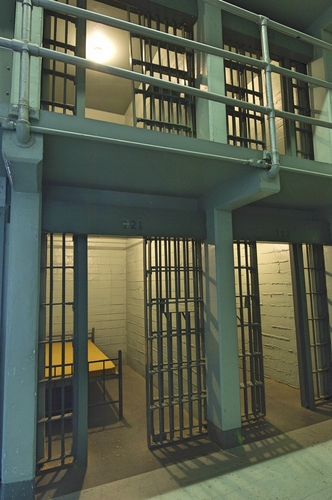What do a maximum security prison and one of Britain’s deepest mines have in common when it comes to safety?
Well, despite each environment being extreme in its own right, with unique hazards, pressures and ways of working – they’re both harnessing the power of effective conversations to keep people safe.
They’ve also all had a visit from Tribe consultant Colin Hewson recently too.
In this article Colin reflects on his experience, and lessons every leader can learn from safety in extreme environments.
Wherever there’s people there’s culture and community
“Being taken around the prison was enlightening. It wasn’t at all what I expected. It was modern, with wide corridors, very clean, but still lots of locked gates and doors and endless security to get through everywhere.
“Life in there isn’t like what you see portrayed on the screen. Their approach is to give prisoners every opportunity to engage in activity and education. It’s maximum security, but staff were genuinely trying to give every prisoner every opportunity to reform and make a better life for themselves.
“Culture change is all about openness, collaboration and speaking up in a positive environment, and these aren’t values people typically associate with a prison – so that was why I was hesitant at first.
“But soon enough we went out into the prison community and engaged with officers and prisoners on things you’d see in everyday workplaces. One prisoner spoke about the hazardous route to and from the laundry while his usual route was fenced off for maintenance. In discussion with an officer, he identified the potential harm to his back from manoeuvring such a large wheeled tub. Thinking about it together, they identified a longer alternative route that significantly reduced the handling issues. He committed to follow this until maintenance was complete.
“In a way I was surprised, but then a prison is still a community of people after all. Its purpose might be very different but people still deserve the right to live and work unharmed.”
Discussion is the best form of prevention
“What really brought to life the fact I was down a mine was what happened during the induction. You’re given what they call a lifesaver kit, containing a small device to help filter the air, which gives you 45 minutes to find your way out of the mine – just enough time to escape from a disaster. How many of us have to contend with that in the workplace?!
“You’ve got hazards from huge plant and machinery, confined spaces, dust and noise, as well as ceiling collapse. All several hundred feet underground. What really raises the risk profile is that if anything serious does go wrong down there, you can’t just dial 999 and expect an immediate response. All you’ve got is prevention and basic first-aiders. That’s why effective safety discussion is so important to them.
“I was down there helping a large group of mining engineers do some practical training in effective conversations – right down at the extraction face. You’d be surprised how commonplace the risks are, even though you’re so far underground in an isolated, extreme environment – like disposal of hazardous hydraulic fluid, wiring in electrical appliances safely so staff don’t injure themselves in mess rooms.”
Get the basics right
“Wherever you’ve got people, you’ve got different agendas and priorities fighting for attention. But you’ve also got conversation, and that means an opportunity to influence behaviour by opening up discussion with the SUSA approach (safe and unsafe acts) to effective conversations.
“Sometimes, when people hear that at the heart of our culture change approach is learning how to have a structured conversation they say ‘oh but we’re different to everybody else, this won’t fit us’ because they feel their problems are too complex or overwhelming. But it isn’t like that. The whole conversation thing is about people – getting them to open up, whatever the subject.
“Often, the same people say ‘but all our processes are well thought-through, we spent a lot of time planning them, and people must abide by them’ when I hear that alarm bells start ringing.
“There’s a certain complacency there, because processes can’t always account for humans – then, when things go wrong, people are astonished. This is a symptom of underlying values and beliefs, not that the processes are imperfect or that people are stupid. It’s a cultural issue.
“This is all just talking – finding out what’s working and why it’s working well, or what the issues are and how you might improve them. It isn’t rocket science, but you’d be surprised at how many people get the basics wrong.
“I always say to leaders – just go out there and talk to people in the right way. You’ll be amazed at what you find out.”





